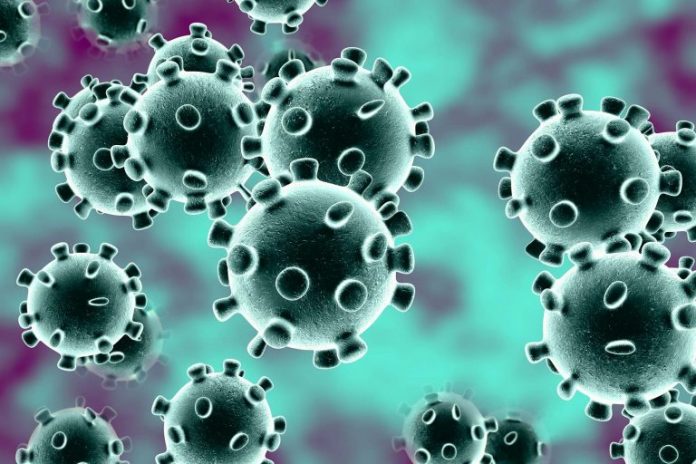Italian authorities have implemented draconian safety measures after the country’s confirmed coronavirus cases surged from three to more than 150 in two days.
Three people are dead and 152 infected with coronavirus in Italy, with authorities increasingly concerned about the new outbreak.
Lombardy, a region in Italy’s north, has 110 cases, the highest number in the country, the head of the country’s Civil Protection agency Angelo Borrelli said.
The country imposed strict quarantine restrictions in two northern “hotspot” regions close to Milan and Venice. About 50,000 people will not be able enter or leave several towns in Veneto and Lombardy for the next two weeks without special permission, the BBC reports.
The outbreak is Europe’s biggest so far.
There are at least 78,914 cases of COVID-19 around the world, the vast majority of which are in mainland China. So far 2467 people have died.
Italy stepped up measures Sunday to ban public gatherings amid rapidly rising numbers of COVID-19 cases in the country, calling off the famed Venice Carnival.
The decision to call off the carnival was announced by Veneto regional Gov. Luca Zaia as the numbers of confirmed coronavirus cases soared to 152, the largest number outside Asia.
“The ordinance is immediately operative and will go into effect at midnight,” Mr Zaia said.
Buses, trains and other forms of public transport — including boats in Venice — were being disinfected, Mr Zaia told reporters.
Museums were also ordered to shut down after Sunday in Venice, a top tourist draw anytime of the year.
Authorities said three people in Venice have tested positive for the COVID-19 virus, all of them in their late 80s and who are hospitalised in critical condition. Zaia said among those infected was a nurse.
Nearly all of Italy’s 152 confirmed cases are clustered in the north, with 110 in Lombardy and others in the regions of Veneto, Emilia-Romagnia and Piedmont.
Only two cases have been found in the south, a Chinese couple in Rome earlier this month.
The death on Sunday of an elderly woman, who was already suffering from cancer and who contracted the virus, raised the nation’s death toll to three, said Lombardy regional official Giulio Gallera. All three deaths occurred in the north.
News of the virus sparked panic buying in Italian supermarkets.
Photos on social media show empty shelves in stores in Milan.
Italian authorities expressed frustration that they haven’t been able to track down the source of the virus spread in the north, which surfaced last week when an Italian man in Codogno, in his late 30s, became critically ill.
“The health officials haven’t been yet able to pinpoint ‘patient zero,” Angelo Borrelli, head of the national Civil Protection agency, told reporters in Rome.
At first, it was widely presumed that the man was infected by an Italian friend he dined with and who recently returned from his job, based in Shanghai.
When the friend tested negative for the virus, attention turned to several Chinese who live in town and who frequent the same cafe visited by the stricken man. But Lombardy Gov. Attilio Fontana told reporters all of those Chinese have tested negative too.
So for now, Borrelli indicated, the strategy is to concentrate on closures and other restrictions to try to stem the spread in the country, which already had taken such measures early on in the global virus alarm, including banning direct flights from China, Hong Kong, Taiwan and Macau.
Italy has also tested millions of airport passengers arriving from other places for any signs of fever. In Lombardy, the hardest-hit region with 90 cases, schools and universities were ordered to stay closed in the coming days, and sporting events were cancelled.
Lombardy’s ban on public events also extended to Masses in churches in the predominantly Roman Catholic nation.
But while public Masses were forbidden in some towns in the hardest-hit areas, and later, by the Catholicpatriarch of Venice, thousands turned out in the southern port city of Bari for a Mass by visiting Pope Francis, who shook hands with the faithful during his public appearance.
Among those shaking the pope’s hand in Bari was Italian President Sergio Mattarella, who came to Bari for the event.
Museums, schools, universities and other public venues will be shut as well in Venice and the rest of Veneto.
The shutdown is expected to last at least through March 1.
In Turin, the main city of the northern Piedmont region, a least three cases were diagnosed.
That region also announced the closure of all schools and universities.
The biggest jump in confirmed cases of COVID-19 was reported by authorities in Lombardy, a populous region which includes the country’s financial capital, Milan.
Nearly all the cases were in the countryside, mainly in Codogno and nine neighbouring towns, where only grocery stores and pharmacies were apparently allowed to stay open while other businesses were ordered shuttered and people – in theory at least – weren’t supposed to enter or leave the towns.
Melissa Catanacci, who lives on one of Codogno’s main roads, said that while entry points were open, others were closed.
SOUTH KOREA
Meanwhile, South Korea on Saturday reported an eight-fold jump in viral infections in four days.
Most of them were linked to a church and a hospital in and around the country’s fourth-largest city, where health workers scrambled to screen more than 9000 worshipers.
South Korea’s president said Sunday that he was putting his country on its highest alert for infectious diseases and ordered officials to take “unprecedented, powerful” steps to fight a soaring viral outbreak that has infected more than 600 people in the country, mostly in the last few days.
Iran raised its death toll from the virus to eight — the highest toll outside of China.
While the number of patients worldwide is increasing, some virus clusters have shown no link to China and experts are struggling to trace where those clusters started.







